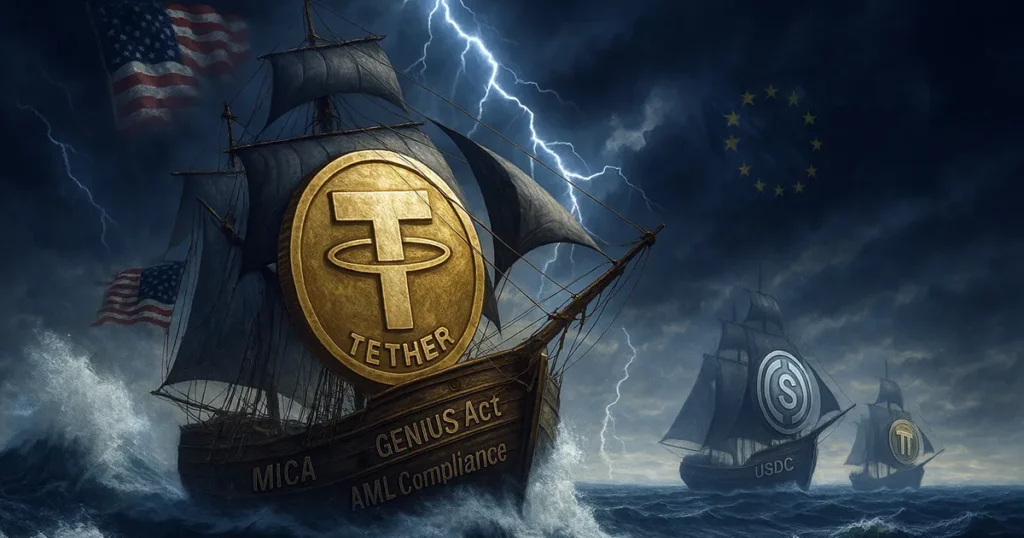
Title: The Stablecoin Regulation Wars: Can Tether Stay On Top?
As the crypto landscape continues to evolve, a new wave of regulations is sweeping across the globe. This time, it’s not just about Bitcoin or Ethereum – the focus has shifted to stablecoins, which have become increasingly popular and mainstream.
In this article, we’ll dive into the regulatory challenges that Tether, one of the largest stablecoin issuers, faces in maintaining its dominance. But first, let’s set the stage: what are stablecoins, exactly?
Stablecoins, also known as fiat-collateralized cryptocurrencies, aim to eliminate the volatility associated with traditional cryptocurrencies like Bitcoin or Ethereum. They’re pegged 1:1 to a specific fiat currency (in this case, USD) and are designed to stabilize market fluctuations.
Now that we’ve covered the basics, let’s jump into the meat of the article:
**The Stablecoin Regulation Wars**
As governments and regulatory bodies around the world scramble to impose their mark on this rapidly growing industry, Tether finds itself at the epicenter. The sheer scale and influence it wields make it a prime target for scrutiny.
In this context, we’ll explore two key aspects: 1) the legal implications of stablecoin issuance and usage; and 2) the existential threats posed by regulatory hurdles.
**Part 1: Legal Implications**
As Tether’s market cap continues to grow, so does its potential exposure to legal risks. For instance, recent incidents involving tokenized securities have raised concerns about the potential for stablecoins to be classified as securities under certain jurisdictions’ laws.
Moreover, there is a heightened awareness among regulatory bodies regarding the need to regulate these digital currencies and ensure they don’t disrupt traditional financial systems. This increased scrutiny poses a significant risk for Tether’s business model.
**Part 2: Existential Threats**
The real concern for Tether lies in the existential threats posed by regulatory hurdles. If regulatory bodies choose to treat stablecoins as securities, Tether would be forced to adapt its operations or risk being shut down. This could significantly impact its user base and market dominance.
In parallel, new players are emerging, capitalizing on Tether’s regulatory uncertainty. These competitors, often backed by reputable institutions or governments, might find themselves in a more advantageous position if they can navigate the regulatory landscape better than Tether.
**Conclusion**
As the crypto space continues to evolve at an incredible pace, it’s crucial for Tether to stay one step ahead of regulatory bodies and adapt to changing market conditions. Given the stakes, maintaining its dominance will be no easy feat.
Source: https://cryptoslate.com/the-stablecoin-regulation-wars-can-tether-stay-on-top/


